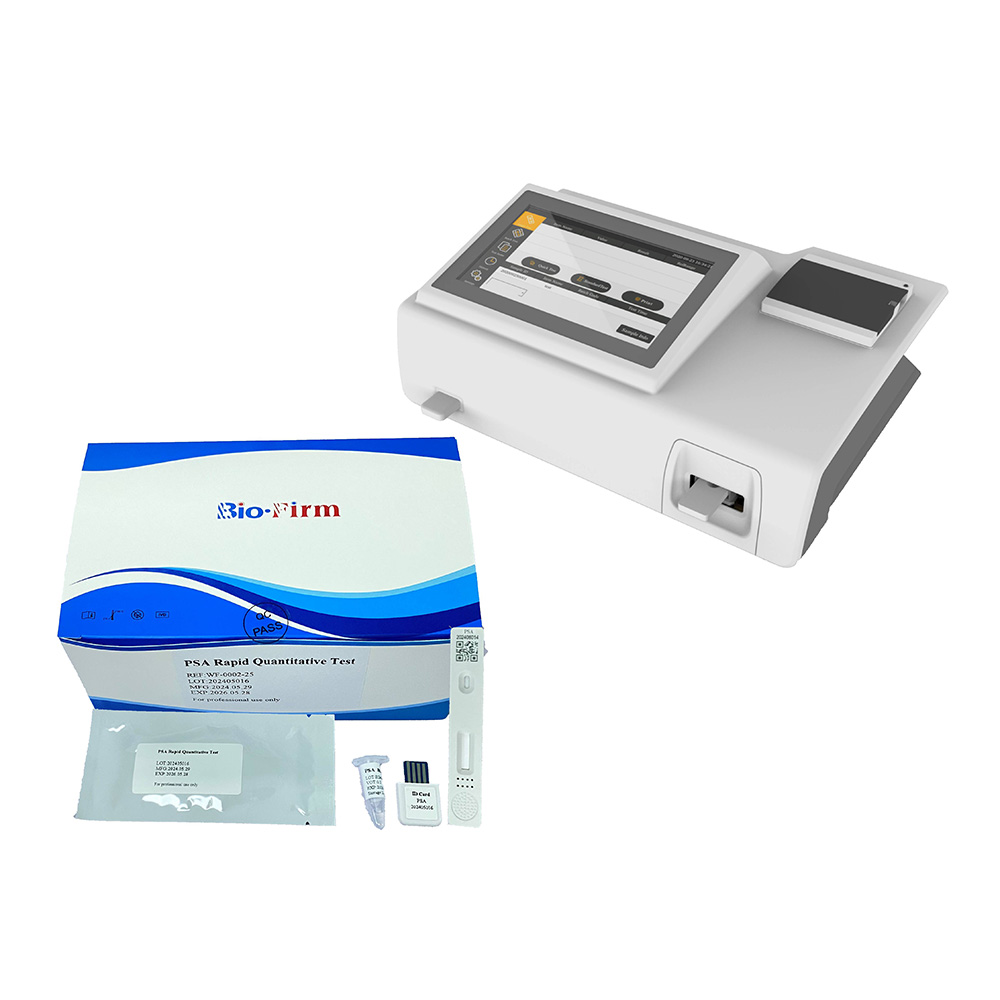Jul 01,2022
In Fluorescence Immunoassay Test (FIA), achieving high sensitivity and specificity is critically dependent on minimizing background fluorescence. Background fluorescence refers to unwanted signal generated within the assay system that is not related to the specific binding event being measured. This background can obscure true signals, reduce the signal-to-noise ratio, and ultimately impair the accuracy and reliability of the test results. Understanding the common sources of background fluorescence is essential for optimizing assay design and interpretation.
One primary source of background fluorescence in FIA is the intrinsic autofluorescence of biological samples. Many biological materials, such as serum, plasma, tissues, or cellular components, contain naturally fluorescent molecules including flavins, collagen, elastin, and NADH. These endogenous fluorophores emit fluorescence when excited at similar wavelengths used to detect the assay’s fluorescent labels, thus contributing to a baseline signal unrelated to the target analyte. The intensity of autofluorescence can vary widely depending on the sample type, preparation method, and individual biological variability.
Another significant contributor is non-specific binding of fluorescent labels or probes. In FIA, fluorescently tagged antibodies or ligands are used to specifically bind to target molecules. However, if these fluorescent reagents bind non-specifically to other components in the sample or the assay surface, they produce fluorescence signals unrelated to the target. Non-specific adsorption can occur on plastic or glass assay plates, tubing, or other materials used in the assay setup. Proper surface blocking and washing protocols are critical to reduce this effect, but residual non-specific binding often remains a challenge.
Fluorescent label instability or degradation can also increase background fluorescence. Some fluorescent dyes or nanoparticles may undergo photobleaching, oxidation, or chemical changes during storage or assay conditions, leading to altered emission spectra or release of fluorescent degradation products. These altered species can emit fluorescence at unexpected wavelengths, complicating signal interpretation and increasing background noise.

Contaminants in reagents and buffers are additional sources of background fluorescence. Impurities in assay buffers, solvents, or other chemicals used in the Fluorescence Immunoassay Test can contain fluorescent molecules or particles that contribute to background signal. The quality and purity of reagents must be carefully controlled, and filter sterilization or purification steps may be necessary to minimize contamination.
Instrument-related factors can also contribute to background fluorescence. Stray light or autofluorescence from optical components such as lenses, filters, or cuvettes can add to baseline noise. In some cases, excitation light may scatter within the instrument or the assay container, generating signals detected as background. Regular instrument maintenance, calibration, and the use of high-quality optical components are important to control such sources.
Finally, sample preparation and handling can inadvertently introduce background fluorescence. Improper washing, inadequate removal of unbound fluorescent probes, or sample matrix effects such as protein aggregation or precipitation can create fluorescent artifacts. Strict adherence to optimized protocols for incubation times, temperatures, and wash steps is vital to minimize these sources.
In conclusion, background fluorescence in Fluorescence Immunoassay Test arises from multiple sources including biological sample autofluorescence, non-specific binding of fluorescent probes, degradation of fluorescent labels, reagent impurities, instrument optics, and sample handling artifacts. Careful assay design, reagent selection, sample preparation, and instrument optimization are essential to reduce background fluorescence and enhance assay sensitivity and accuracy.



 Español
Español
 Français
Français
 Deutsch
Deutsch
 عربى
عربى








